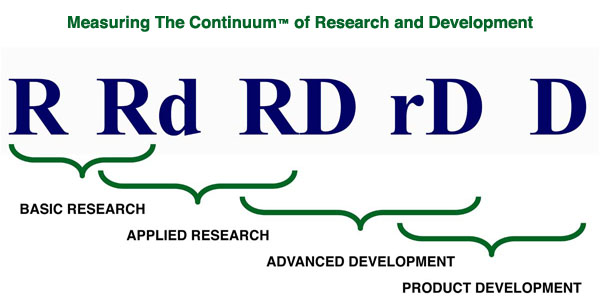Top 25 Corporate R&D-Product Development Metrics Now Focus On Portfolio, Pipeline, and Profits
GGI’s sixth primary research study of the Top 100 R&D and Product Development Metrics in North America, published on March 3, 2014, found notable shifts in Key Performance Indicators (KPIs) for R&D and Product Development in the past five years.
Innovation functions have been increasingly measured in business terms since the late 1980s, but the balance of the Top 25 KPIs remained internal to the function and were not business-focused. In 2008, the balance became roughly even. In 2014, the balance tipped. Industry now measures the product portfolio as it evolves in the pipeline with ten metrics that span end-to-end. Three metrics measure ROI, IRR, NPV, or Payback. Three metrics measure revenues.
In addition, there are two measures of new product profits. Average First-Year Profits of New Products joined Percent of Profits From New Products. Both profit measures have been steadily rising in their adoption since the early 2000s. Prior to 2000, profit measures were not present in the Top 25. Perhaps the hardest KPI to accurately measure, this finding indicates that companies have increased their depth of understanding regarding their hard to quantify innovation functions.
The final seven measures focus on internal management of R&D, such as: Time-To-Market, Development Cost, R&D Spending, and measures of Headcount.
Movement in the remaining 75 metrics over GGI’s six studies indicates that measures of Intellectual Property (IP), Licensing, and IP Revenues and Profits will likely displace some of the current Top 25.
R&D still lags other business functions in its cross-industry measurement equivalency. Only seven KPIs are common across more than 40% of industry, and only fourteen KPIs are common across more than 30% of industry. KPI #25 is common across only 17% of industry. In comparison, other functions may have 70% or more KPI equivalency across industries.
GGI’s sixth study also researched changing trends in the R&D Operating Environment, Organic Innovation, Open Innovation, and Intellectual Property.
The complete findings of the research are available. They are being used to augment GGI’s executive education curriculum, ongoing since 2005, on Metrics and Innovation. A Summit on Corporate Metrics will be held December 9-11, 2014. A Summit on Corporate Innovation will be held April 7-9, 2015.
![Goldense Group, Inc. [GGI] Logo](https://goldensegroupinc.com/blog/driving-product-development/wp-content/uploads/2022/03/logo-corp-darkBlue-65x65.png)
